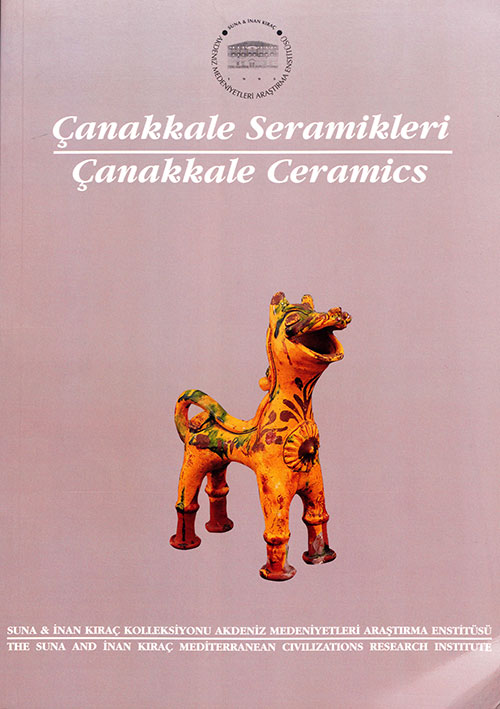
| Author | Ara Altun – Şebnem Akalın – Belgin Demirsar – Hülya Yılmaz |
| Material Type | Book |
| Year | 1996, İstanbul |
| ISBN No | 9759495708 |
| Dimensions | 210×300 mm |
| Page | 160 pp, paperback |
| Figure | 252 coll. ill. |
| Language | Bilingual in Turkish and English |
| Translation | Tülay Artan |
| Series | The Suna and İnan Kıraç Mediterranean Civilizations Research Institute publication no: 1 |
Summary
The Çanakkale ceramics, produced at Çanakkale from the late 17th century to the first quarter of the 20th century, distinguish themselves greatly from those produced at Iznik and Kütahya. In the recent years the collectors and museums started to show more interest in the Çanakkale ceramics, thus culminating at the identification of new types and new displays. These ceramics feature a red paste with large pores but rarely a beige paste. The early examples from the late 17th and early 18th century comprise mainly large size deep bowls, plates and jars. The designs were painted in purplish dark brown, orange, yellow, dark blue and white under a greenish colourless or beige coloured clear glaze.
In the 18th century the designs seem to have been applied with brushes. Abstract flowers, rosettes, dots, sail-boats, galleons, mosques, pavilions, birds, fishes, animals were rendered very skilfully but abstract. The quality deteriorates gradually in the 19th and early 20th century. Productions include jars, ewers, jugs, vases, sugar bowls, flower pots, braziers, pots, plates, water bottles, candlesticks, coffee cups, lamps, inkpots, teapots, animal or human shaped figurines. Such examples are monochrome-glazed in clear beige, green, yellow, brown or purple and further decorated with very high and large rosettes, leaves and flowers in baroque character. The late examples of Çanakkale ceramics are extremely curious works of art with their weird forms and excessive decorations.
The book gives an overall introduction to Çanakkale ceramics and presents 252 items from the Suna and İnan Kıraç collection.
